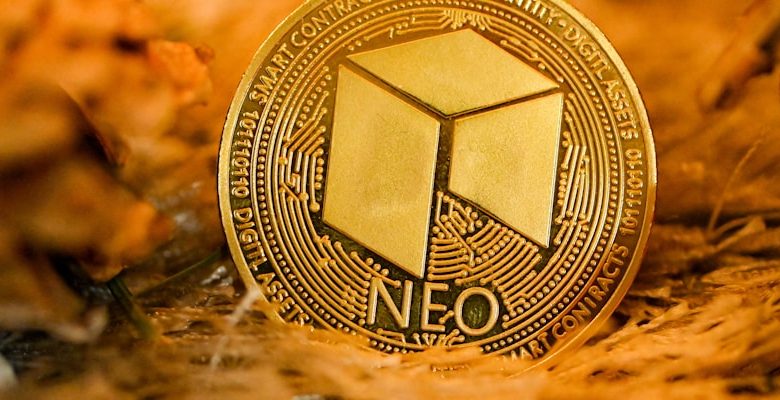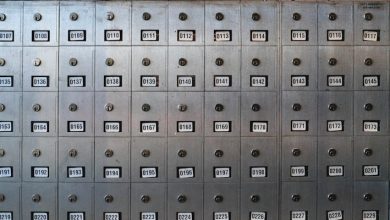How NFTs Are Leveraging Blockchain for Digital Ownership

- Understanding the basics of NFTs and blockchain technology
- Exploring the intersection of digital ownership and blockchain
- The rise of NFTs in the art and collectibles market
- Challenges and opportunities of using blockchain for NFTs
- How NFTs are reshaping the concept of ownership in the digital age
- Future implications of NFTs on the blockchain ecosystem
Understanding the basics of NFTs and blockchain technology
NFTs, or Non-Fungible Tokens, are a type of digital asset that represent ownership of a unique item or piece of content. These tokens are built on blockchain technology, which is a decentralized and secure digital ledger that records transactions across a network of computers.
Blockchain technology ensures that NFTs are secure, transparent, and immutable. Each NFT is stored on a blockchain, making it easy to verify ownership and authenticity. This technology has revolutionized the way digital assets are bought, sold, and traded.
When you purchase an NFT, you are buying a token that proves you own a specific digital asset. This could be anything from digital art, music, videos, or even virtual real estate. The ownership of the NFT is recorded on the blockchain, providing proof of authenticity.
By leveraging blockchain technology, NFTs have introduced a new way for creators to monetize their work and for collectors to invest in digital assets. The decentralized nature of blockchain ensures that transactions are secure and that ownership rights are protected.
Understanding the basics of NFTs and blockchain technology is essential for anyone looking to participate in this emerging market. By grasping the fundamentals of how NFTs work and how they utilize blockchain technology, you can make informed decisions when buying, selling, or creating digital assets.
Exploring the intersection of digital ownership and blockchain
Blockchain technology has revolutionized the concept of digital ownership by introducing non-fungible tokens (NFTs). These unique tokens are built on blockchain, which ensures transparency and security in transactions. NFTs have gained popularity in the digital art and collectibles market, allowing creators to prove ownership and authenticity of their work.
NFTs have provided a way for artists to monetize their digital creations in a secure and transparent manner. By leveraging blockchain technology, NFTs allow artists to create limited editions of their work, thereby increasing the value of each piece. This has opened up new possibilities for artists to reach a global audience and establish ownership rights over their creations.
The intersection of digital ownership and blockchain has also extended to other industries such as gaming, music, and real estate. In the gaming industry, NFTs are being used to create unique in-game items and characters that players can buy, sell, and trade. In the music industry, artists are exploring the use of NFTs to sell limited edition albums and concert tickets. Real estate developers are also looking into using NFTs to tokenize properties, making it easier for investors to buy and sell shares of real estate assets.
Overall, the intersection of digital ownership and blockchain through NFTs is reshaping the way we perceive and interact with digital assets. As blockchain technology continues to evolve, we can expect to see even more innovative applications of NFTs in various industries, further solidifying the importance of digital ownership in the digital age.
The rise of NFTs in the art and collectibles market
The rise of Non-Fungible Tokens (NFTs) in the art and collectibles market has been nothing short of revolutionary. NFTs have leveraged blockchain technology to provide digital ownership of unique pieces of art and collectibles, allowing creators to monetize their work in new and innovative ways.
Artists and collectors alike have embraced NFTs as a way to authenticate and sell digital assets securely. By using blockchain, NFTs ensure the scarcity and provenance of digital art, making it possible for creators to retain ownership and control over their work while still allowing for easy transfer of ownership.
NFTs have opened up a whole new world of possibilities for artists, allowing them to reach a global audience and connect directly with collectors. This direct relationship between creators and buyers has disrupted traditional art markets, democratizing the process of buying and selling art.
Challenges and opportunities of using blockchain for NFTs
When it comes to utilizing blockchain technology for NFTs, there are both challenges and opportunities that need to be considered. While blockchain provides a secure and transparent way to verify ownership of digital assets, there are still some hurdles to overcome.
- One of the main challenges of using blockchain for NFTs is the scalability issue. As the popularity of NFTs continues to grow, blockchain networks may struggle to handle the increased demand, resulting in slower transaction times and higher fees.
- Another challenge is the environmental impact of blockchain. The process of minting NFTs requires a significant amount of energy, leading to concerns about the carbon footprint of this technology.
- On the other hand, there are also opportunities to leverage blockchain for NFTs. Blockchain allows for decentralized ownership, eliminating the need for intermediaries and giving creators more control over their work.
- Additionally, blockchain enables provenance tracking, making it easier to verify the authenticity and ownership history of NFTs. This can help prevent fraud and ensure that creators are properly compensated for their work.
In conclusion, while there are challenges to overcome, the opportunities presented by using blockchain for NFTs are significant. By addressing issues such as scalability and environmental impact, blockchain has the potential to revolutionize the way we buy, sell, and own digital assets.
How NFTs are reshaping the concept of ownership in the digital age
NFTs, or non-fungible tokens, have revolutionized the concept of ownership in the digital age. By leveraging blockchain technology, NFTs provide a unique way for individuals to claim ownership of digital assets. Unlike cryptocurrencies such as Bitcoin or Ethereum, which are interchangeable, NFTs are one-of-a-kind tokens that represent ownership of a specific item or piece of content.
One of the key benefits of NFTs is that they allow creators to tokenize their work and sell it as a unique digital asset. This has opened up new opportunities for artists, musicians, and other creators to monetize their work in a way that was not possible before. By minting their creations as NFTs, creators can prove ownership and authenticity, and even receive royalties whenever their NFT is sold or traded.
Furthermore, NFTs have reshaped the way we think about ownership in the digital realm. In the past, digital assets could be easily copied and shared without any repercussions. However, with NFTs, ownership is recorded on the blockchain, making it easy to verify who owns a particular asset. This has significant implications for the art world, where provenance and authenticity are crucial.
Overall, NFTs are transforming the way we perceive ownership in the digital age. By leveraging blockchain technology, NFTs provide a secure and transparent way for individuals to claim ownership of digital assets. This has the potential to revolutionize industries such as art, music, and gaming, opening up new possibilities for creators and collectors alike.
Future implications of NFTs on the blockchain ecosystem
NFTs have the potential to revolutionize the blockchain ecosystem by transforming the way digital ownership is established and verified. As more industries and creators adopt NFT technology, it is likely that we will see a shift towards a more decentralized and transparent digital economy.
One of the key implications of NFTs on the blockchain ecosystem is the increased demand for blockchain technology and smart contracts. As more NFTs are minted and traded, there will be a growing need for secure and efficient blockchain networks to support these transactions.
Additionally, NFTs have the potential to democratize access to digital assets and empower creators to monetize their work directly. This could lead to a more equitable distribution of wealth in the digital space, as creators are able to retain ownership and control over their creations.
Furthermore, the rise of NFTs could lead to new business models and revenue streams for artists, musicians, and other content creators. By tokenizing their work, creators can tap into new markets and reach a global audience of collectors and fans.
In conclusion, the future implications of NFTs on the blockchain ecosystem are vast and transformative. As this technology continues to evolve and gain mainstream adoption, we can expect to see a more decentralized, transparent, and inclusive digital economy emerge.



